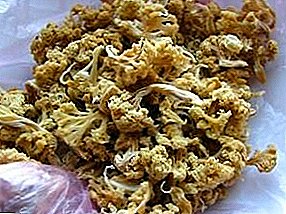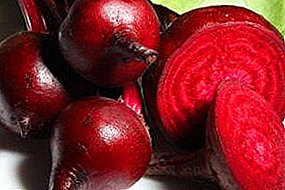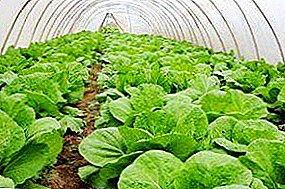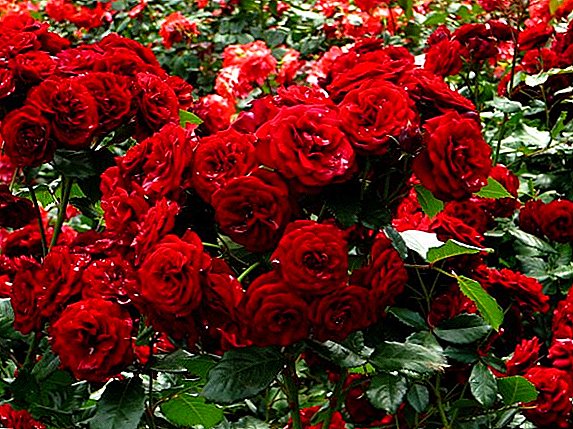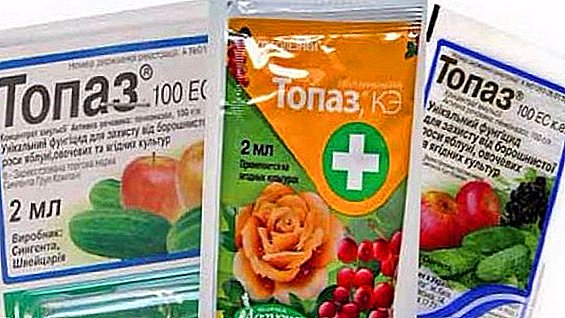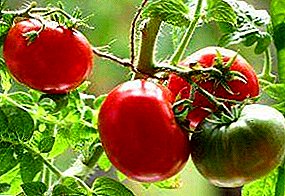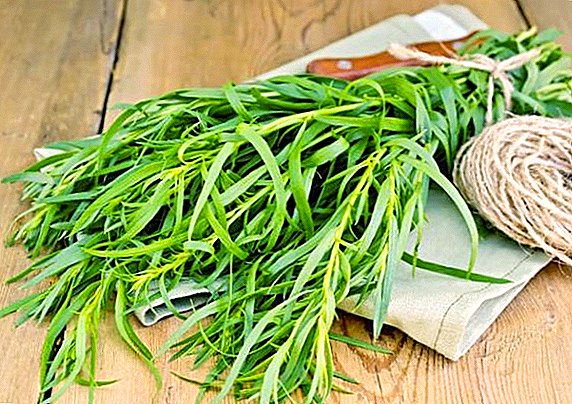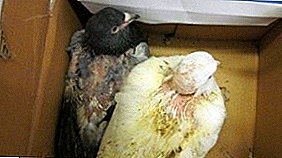
Buying a dairy cow is not an easy task.
In this matter, it is best to find out as much information as possible about the best breeds of cows that were created specifically to get milk from them.
You should also evaluate the milkiness of each of the selected breeds.
It is best to find out what breeds are bred at local agricultural enterprises, and to purchase a cow of exactly the breed that is bred there.
For many years, from the list of all dairy cattle breeds, several varieties were selected that best meet the needs of the host in dairy products.
Holstein breed of cows

The cattle of the Holstein breed was bred in America and Canada. The main purpose of the creation of this breed was to obtain a black-and-white animal with high levels of milkiness and a strong body.
In 1861, a new breed of black-and-white cow (Holstein friezes) appeared. Since 1983, this cattle has acquired its current name and rooted for a long time in the circle of livestock breeders.
The vast majority of Holstein cows painted in black and motley shades. In addition, there are still animals with a red-motley skin tone.
The weight of a young cow is often about 650 kg, and an adult animal weighs about 750 kg. if you can “fatten” a Holstein cow to a weight of 800-850 kg, then consider that you have succeeded in raising cattle. The weight of one bull can reach 1200 kg.

Have holsteins well developed udder, dairy veins are visible well, and the musculature is expressed not as brightly as in other representatives of this trend.
The udder itself is quite voluminous, wide, very firmly attached to the abdominal wall. In more than 95% of cows, the udder is shaped in a bowl shape.
The degree of milkiness of a cow depends on how varied the climate of the region where the animal lives at the moment.
Those Holstein who live on farms in a warm, maritime climate, will give more than 10,000 kg, and from those animals that are grown in a temperate climate zone, it will be possible to get no more than 7,500 kg of milk.
But the plus will be the fact that the fat content is distributed inversely proportional, that is, in the first case, the milk will be with low fat content, and in the second - with sufficient.
When slaughtering this breed of cows, the meat yield will be about 50 - 55%.
Ayrshire cows

Ayrshire cows were bred back in the 18th century in Scotland by crossing Dutch, Alderney, Tiswatera and Flemish cattle. Externally, these cows are formed quite strong, with a proportional physique.
The backbone of them is strong, but thin, the sternum is wide and deep. The head is small, slightly elongated in the face. Horns light shades large enough. The neck is short and thin, covered with small folds of skin.
The transition between the shoulder and the head is smooth. Legs short, but stamped correctly. Muscles are moderately developed. The skin of these cows is thin, with ubiquitous hair.
Udder bowl-shaped, well developed, nipples medium, spaced at optimal intervals. The original color of these cows was a red-and-white shade, and later cows began to appear in white with small spots of red, or the whole body was painted in dark red with small white spaces.
The temperament of these animals is very difficult, they can be easily frightened, they are also able to show aggression. Colds, these cows endure very well, but in hot conditions they become slow-moving.

The weight of a cow in adulthood can be 420–500 kg, and a bull — 700–800 kg.
Calves are born small, 25-30 kg each.
Aurshire cows give a lot of milk. During the entire period of lactation, 4000-5000 kg of milk with a fat content of 4-4.3% can be obtained from one heifer.
Because of this fat content in the milk of these cows, small fat globules can be detected.
The meat output of the Ayrshire breeds is assessed as satisfactory. From one cow about 50-55% of its weight will go to meat.
It is also interesting to read about the features of milking a cow.
Dutch cow breed

Dutch dairy cows are considered the most famous representatives of this species in general. This breed was bred without the use of foreign species, so initially is purebred.
Today, this variety of cows is grown in 33 countries. Dutch dairy cows are of three types: black and motley, red and motley and Groningen. The most famous of them are the black-and-white animals, the second name of which is Frisian cows.
For 150 years of breeding this breed of cows, animal technicians have managed to develop these animals to the level when they meet all quality standards. Previously, these cows focused exclusively on meat, were not sufficiently developed in the area of muscle mass.
Today, these cows give not only a lot of milk, but also have a good physique.
Their bones are strong, their backs are even, the back third of the cow’s body is wide and straight, which is typical of Friesian cows.
These chicks are well developed front and middle parts of the body. The udder is large, the lobes are evenly divided, the nipples are arranged correctly. Even if this breed of livestock and there were shortcomings, for such a long period of operation they were able to eliminate.

As far as productivity is concerned, more than 4500 kg of milk can be obtained from one cow, in which indicators of fat content will be about 4%.
This type of livestock is growing very quickly, for the first year of life the calf can gain about 300 kg of live weight.
An adult cow can weigh 500-550 kg, and a bull - 800-900 kg.
Calves are born large, 38-40 kg.
If the animal is well fattened, then at the stage of slaughtering the percentage of meat from the total weight of the cattle will be 55 - 60%.
Red steppe breed of cows

Red steppe cows are mostly dairy cows, but some individuals can be attributed to meat and dairy cattle.
This breed received its name because of the characteristic color of the animal - the color is red, and the color varies between light brown to dark red.
There may also be white spots on the skin, especially on the belly or legs. For bulls, dark coloring of the sternum and back is characteristic.
In height, cows can grow up to 126-129 cm, if measured from withers.
Red steppe cows are dairy cattle by all external signs. They have light bones, a long, angular body, a medium sized head. The neck is long, thin, covered with a large number of skin folds.
The sternum is deep, narrow, the decompression is poorly developed. The loin is wide, medium in length, the sacrum may be slightly raised. The volume of the abdomen is large, but the abdominal wall does not sag. Legs strong and straight.

The udder is well developed, in shape it is round, medium in size, ferrous in structure.
Sometimes it is possible to meet cows whose udder is not properly developed, that is, it has an irregular shape, and the lobes are unevenly developed.
Red steppe cows easily get used to the new climate, heat resistant, lack of moisture and eat all the grass on the field for walking.
External faults can be considered incorrectly placed limbs, narrow sternum, as well as a narrow hanging sacrum.
Musculature in cattle of this species is poorly developed, weight is small. Cows that have been inn 3 or more times weigh an average of 450-510 kg. Bulls-manufacturers can gain 800-900 kg of body weight.
Calves are born at 30-40 kg depending on gender.
Meat yield is 50-55%.
On average, milk yield per cow makes up 3500-4000 kg of milk with fat content of 3.7-3.9%.
Kholmogory breed of cows

Kholmogory cows are considered one of the most typical representatives of dairy breeds. Often they are painted in black and variegated shades, but sometimes you can find cows of red-and-variegated, red and black colors.
The body of these animals is oblong, the legs are long, the back and loin are even, the sacrum can be 5-6 cm higher than the withers, which is almost imperceptible.
The loin is rather wide, flattened. Back wide, well developed. The legs are positioned correctly., they are well defined joints and tendons. The belly is voluminous, round. Sternum well developed, but not deep.
The development of musculature is also at a decent level. The skin is elastic, medium in thickness. The udder is average, the lobes are uniformly developed, the nipples are cylindrical, the length of one can vary from 6.5 to 9 cm.
The head is small, elongated in the face. Horns are short.
Get used to the new conditions of keeping this cow very quickly.

Females weigh on average 480-590 kg, in bulls - 850-950 kg.
The largest cows gained about 800 kg, and bulls - 1.2 tons.
The meat of these cows is of decent quality.
With good fattening from the entire mass of the animal 55-60% will be given to clean beef.
Milk productivity is high, from a cow you can get from 3600-5000 kg of milk with a maximum fat content of 5%.
During lactation, a cow can produce more than 10,000 kg of milk.
Yaroslavl breed of cows

The Yaroslavl breed of cows was bred in the 19th century in the Yaroslavl region as a result of breeding. It is considered one of the best breeds in the territory of the CIS countries.
The color of these cows is predominantly black, but there are individuals of black and motley and red and motley shades. The head is almost always white, white circles are also formed around the eyes, and the nose is dark. Also, the belly, tail brush and lower legs are painted white.
The adult cow in height gains 125-127 cm, and its live weight in it is 460-500 kg. bulls can weigh 700-800 kg.
The body type of the Yaroslavl rocks is typically milky, the forms are slightly angular. The body is slightly elongated, legs are low and thin.
The chest is deep but narrow, dewlap is underdevelopedhigh withers. The neck is long, covered with small folds of skin, which is very thin and elastic in its structure.

Subcutaneous fat in these cows is produced relatively little. The muscles are poorly developed., and around the perimeter of the body.
The head of these cows is dry and narrow, the front part is slightly elongated, the horns are light, but the ends are dark.
The back is of medium width, the sacrum is often roof-shaped, often such phenomena as narrowing of the body in the ischial tubercles and drooping are common. The belly is large, the ribs are set wide apart. The udder is round, well developed.
The front nipples are slightly wider than the rear ones, which is a distinctive feature of Yaroslavl cows.
In a year, one cow can produce on average 3500 - 6000 kg of milk with a stable fat content of 4–4.5%. During the first lactation, 2250 kg can be drunk from a cow.
The meat of cows of the Yaroslavl variety of decent quality, the output at slaughter can be 40-45%.
Tagil breed of cows

Tagil cows are exclusively dairy cattle. They are low, at the withers height can be about 125-128 cm, the mass can reach up to 450-480 kg.
Externally, the cows are squat, as the body is quite elongated (153-156 cm). The chest is set deep, the neck is straight and long, with small skin folds.
The skin itself is elastic and dense. The head is average, dry. The backside of these cows is elongated and narrow. The backbone is good, strong. The udder is well developed, the nipples are set correctly and also have a comfortable length.
The skin of the Tagil cows is mainly of black and variegated colors, but there are also brown, red, red and variegated, as well as white and black and red animals.
The hooves, nose and tips of the horns are black.

The disadvantages of this breed are found only in the exterior, that is, a cow can have too narrow pelvis, incorrectly set legs or poorly developed muscles.
These cows will take a walk in the fresh air to the soul, they are well accustomed to even the worst climatic conditions. The reproductive function of the cow is performed for a very long time, up to the overcoming of the age line of 15-20 years.
Tagil cows have good meat qualities. Per day, gobies gain in weight 770 - 850 g, and their weight at the age of just over a year is already 400 - 480 kg. The fatter the animal, the more meat it can be obtained. The average is kept at 52-57%.
These cows are milked very well - from one heifer you can drink more than 5000 kg of milk with a fat content of 3.8 - 4.2%.
Now you have a list of the most worthy representatives of dairy cows and you can safely buy either an already adult cow or a little calf and enjoy fresh milk every morning.


